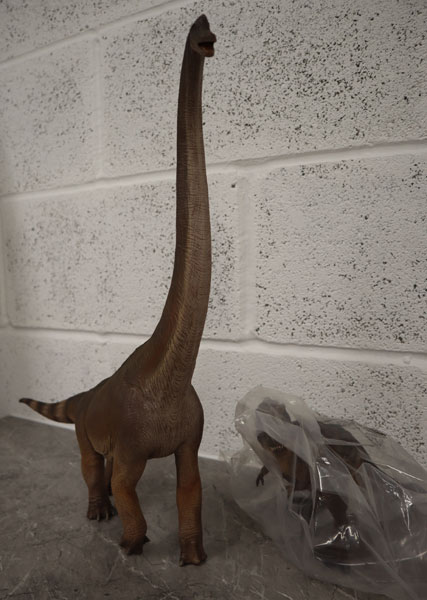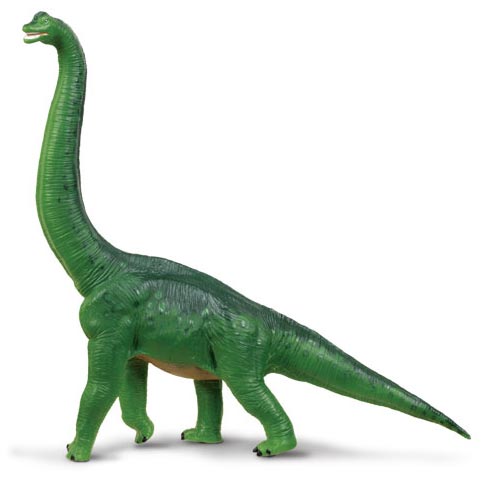The macronarian clade of sauropods includes some of the largest dinosaurs to be scientifically described. However, many of these super-sized sauropods are known from scrappy and fragmentary remains. Dinosaurs with a high profile with the public are often very poorly understood by palaeontologists. Team members at Everything Dinosaur, take a look at one such example concerning the Macronaria. Time to outline the differences between Brachiosaurus and the Giraffatitan genus. Giraffatitan vs Brachiosaurus – a tale of the tape.
Giraffatitan vs Brachiosaurus
The Brachiosaurus genus was erected by Elmer Riggs (1903) following a study of two partial sauropod skeletons found in the Grand River Valley of Colorado. Riggs named this newly discovered dinosaur Brachiosaurus altithorax, it remains the type species.
The picture above shows a Brachiosaurus model from an American manufacturer. To view this range of models and figures: Wild Safari Prehistoric World Models and Replicas.
Giraffatitan
In the early 20th century, extensive excavations in German East Africa (Tanzania), resulted in the collection of a large amount of brachiosaurid and other dinosaur fossil material. The German palaeontologist Werner Janensch, in 1914, compared the African fossils with Brachiosaurus fossil remains from North America and concluded that the African material represented the same genus. Janensch named two further species of Brachiosaurus – Brachiosaurus brancai and Brachiosaurus fraasi.
A Dinosaur Subgenus
The American palaeontologist Gregory S. Paul reconstructed the skeleton of Brachiosaurus brancai and highlighted several autapomorphies between these African fossils and B. altithorax. He still considered the Tanzanian material to represent Brachiosaurus but concluded that these fossils should be placed in a subgenus and proposed Brachiosaurus (Giraffatitan) brancai whilst designating the U. S. fossil material as Brachiosaurus (Brachiosaurus) altithorax.
Further revisions and studies from other scientists led to the realisation that the African brachiosaurid was generally more gracile with a different body shape when compared to Brachiosaurus altithorax. The tail of the African dinosaur was shorter and not as tall. In addition, Brachiosaurus altithorax had a dorsal vertebrae series that was 23% bigger than that associated with the Tanzanian material.
Over the last fifteen years or so, the genus Giraffatitan and the species G. brancai became more accepted by academics with most palaeontologists regarding the African fossils as distinct but representing a dinosaur that was closely related to the sauropod represented by the American material.

Picture credit: Everything Dinosaur
To view replicas of sauropods and other prehistoric creatures: Mojo Fun Prehistoric and Extinct Replicas.







Leave A Comment